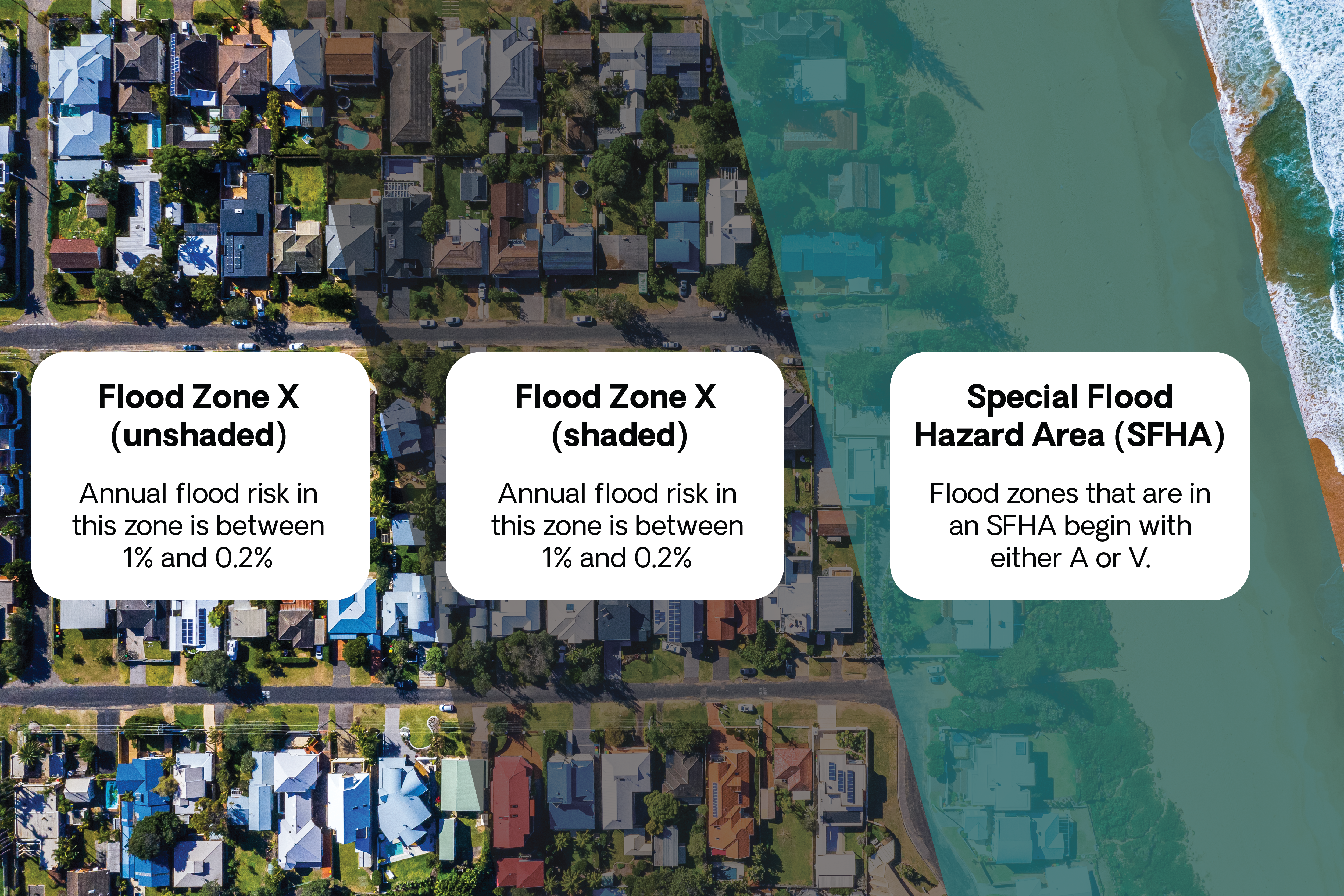Flood Zone X is a designation on a flood map that indicates an area with moderate-to-low risk for floods. FEMA actually has two distinct flood zones with this designation: one shaded and one unshaded.
In this article:
What's the difference between shaded and unshaded Flood Zone X?

Flood Zone X (shaded) indicates an area where the annual flood risk is between 1% and 0.2%. This is considered a moderate risk. When Zone X is unshaded, the risk for flood is less than 0.2 % and may be protected from 100-year flood by a levee.
What is Zone X’s base flood elevation (BFE)?
FEMA has not set a BFE for either the shaded or the unshaded Flood Zone X because the area is considered outside of the flood risk region.
If you’d like to double-check your flood zone and BFE, you can search your address via FEMA’s Flood Map Service Center.
Are homes in Flood Zone X required to have flood insurance?
Flood Zone X is not a Special Flood Hazard Area like Flood Zone A or Flood Zone AE, so homeowners with a federally backed mortgage aren’t required to get flood insurance.
That said, you may still want to investigate your risk and consider getting a quote. This zone’s minimal flood risk is low, so coverage is considerably less expensive than other zones. The extra premium may be worth it during exceptionally rainy years.
Areas that typically don’t see frequent flooding can, over time, develop drainage issues that lead to pooling near homes. According to FEMA, one inch of water can lead to roughly $25,000 worth of property damage. That alone may make flood insurance a smart investment.
How much does flood insurance cost in Flood Zone X?
Because Flood Zone X is relatively low risk, the area's flood insurance premiums tend to be lower than others. According to data from the National Flood Insurance Program (NFIP), the average premium was just under $700 in Zone X in May 2024.
The NFIP vs. private flood insurance for Flood Zone X
Homeowners in Flood Zone X who want flood insurance have two choices. You can either buy a policy from the NFIP or get one through a private insurance company.
Coverage from the NFIP is limited to $250,000 for your home and $100,000 for your belongings. Plus, policies take 30 days to kick in, which means any flood damage that occurs during the waiting period is not covered.
Private insurers can typically offer more options and higher coverage limits than the NFIP. For example, some companies offer flood insurance as an add-on to your home insurance policy. This can mean you won't have to sit through a waiting period and your flood coverage limits might match your dwelling, personal property, and other structures limits.
Tips to minimize flood damage in Flood Zone X
Floods can happen anywhere, and the aftermath can be costly. Whether or not you get insurance, you want to reduce the potential expense. Here are some tips to help you prevent flood damage:
- Move equipment to higher floors. Make an effort to relocate items that could be damaged to a higher area if you get a flood warning. This means moving televisions, printers, and computers to the second floor or up on countertops.
- Install backflow valves. Floodwaters might miss your home and still cause a strain on city systems. By installing backflow valves, you minimize the chance of sewer backup entering your house.
- Make your voice heard. If you notice areas of minor flooding in the community after mild or moderate rain, talk to your local water management department about maintaining proper drainage. By speaking up, something can be done to prevent community flooding.
Is Flood Zone X bad?
No, homes in flood zone X are at a relatively low risk of flooding compared to some of the other FEMA flood zones.
However, water damage is no joke. Even in Flood Zone X, do what you can to protect your house and belongings.
Learn more about flood zones

